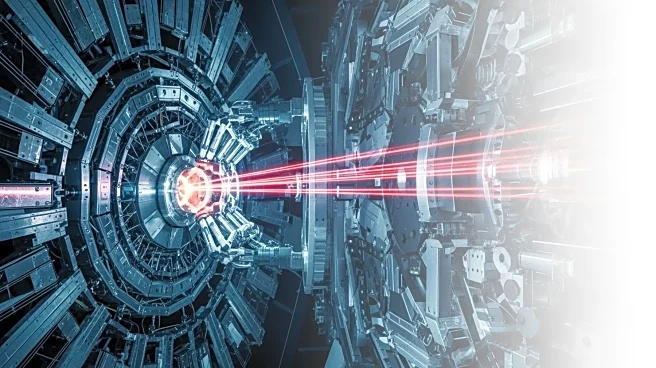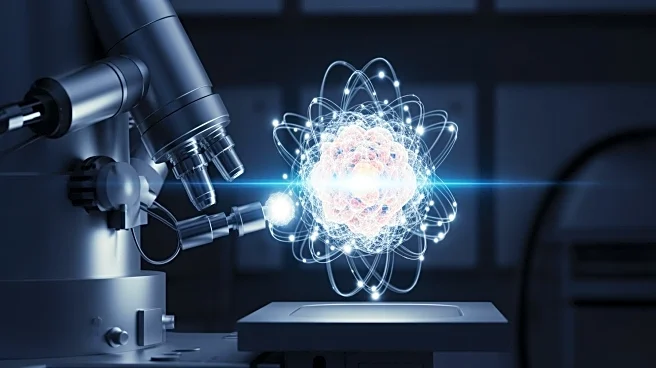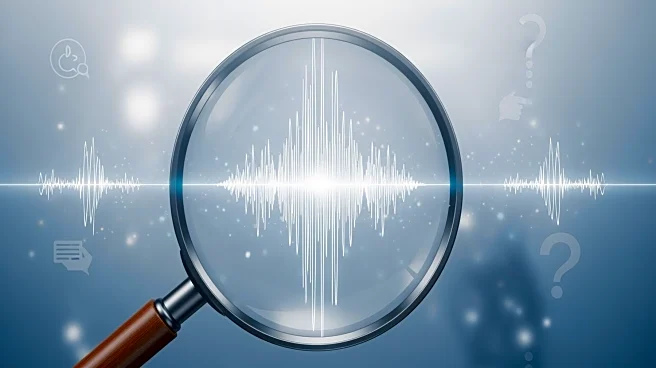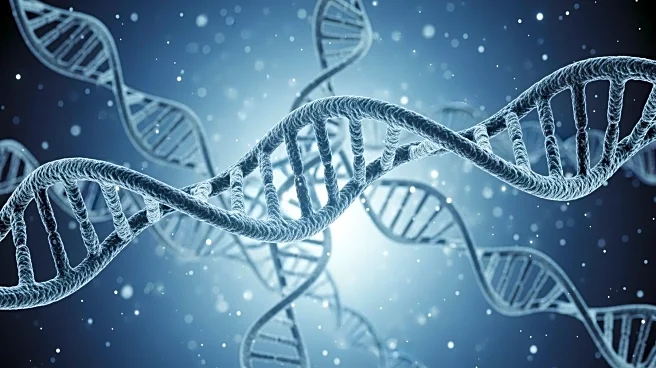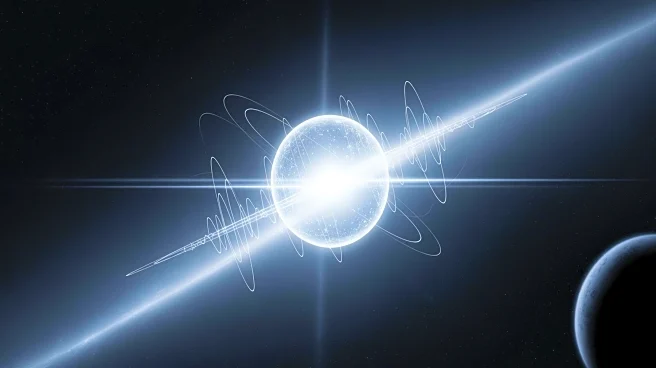What's Happening?
Physicists at the Massachusetts Institute of Technology (MIT) have pioneered a novel technique to investigate the interior of atomic nuclei using the atom's own electrons as 'messengers.' This groundbreaking
approach involves measuring the energy of electrons orbiting a radium atom chemically bound to a fluoride atom, forming radium monofluoride. By utilizing the molecular environment as a microscopic particle collider, the researchers confined the radium atom's electrons, increasing the likelihood of their interaction with the nucleus. This method offers a compact, table-top alternative to traditional experiments that require large-scale accelerators to study nuclear interiors. The research, published in Science, marks a significant advancement in nuclear physics, allowing for direct probing of nuclear interiors and the measurement of nuclear 'magnetic distribution.'
Why It's Important?
This development holds substantial implications for the field of nuclear physics and cosmology. By enabling the measurement of nuclear magnetic distribution, the technique could provide insights into why the universe contains more matter than antimatter, a fundamental question in cosmology. The radium nucleus, with its asymmetric shape, is predicted to amplify signals of symmetry violation, potentially observable through this new method. This could lead to a deeper understanding of fundamental symmetries and their violations, which are crucial for explaining the matter-antimatter imbalance in the universe. The research also opens new avenues for studying nuclear properties with greater precision, potentially impacting various scientific fields reliant on nuclear physics.
What's Next?
The MIT team plans to further refine this technique to map the distribution of forces inside the nucleus. Future experiments will focus on cooling the radium-containing molecules and controlling the orientations of their nuclei to precisely map their contents. This could enhance the search for violations of fundamental symmetries in nature. The research, supported by the U.S. Department of Energy, sets the stage for more detailed investigations into nuclear properties and their implications for understanding the universe's fundamental structure.
